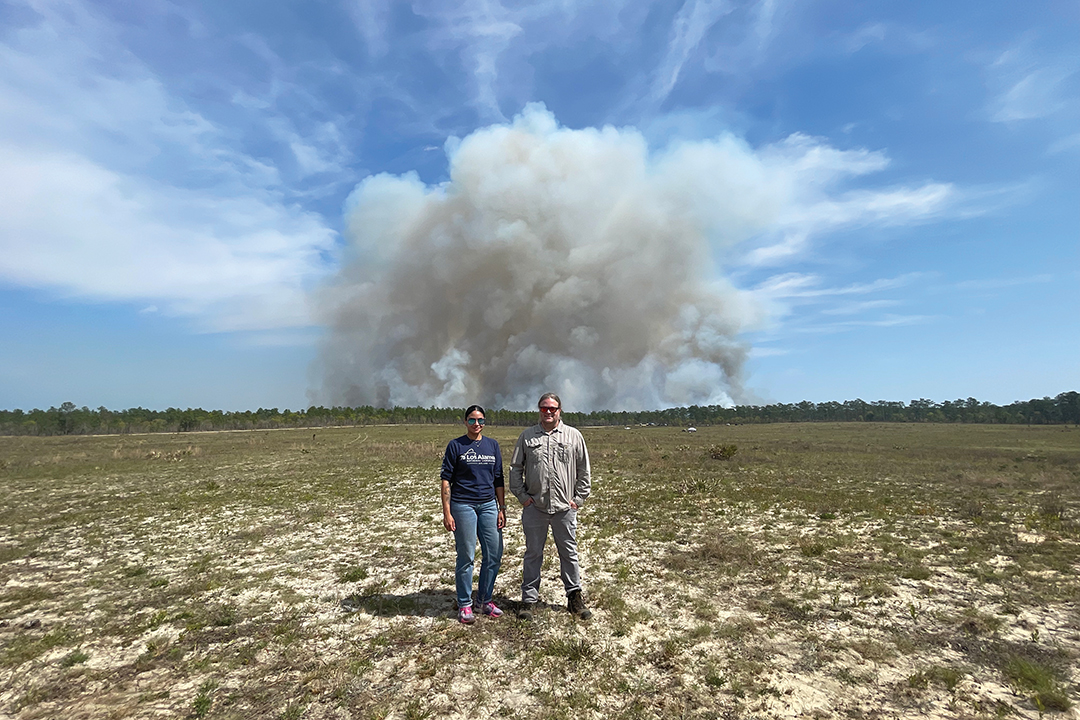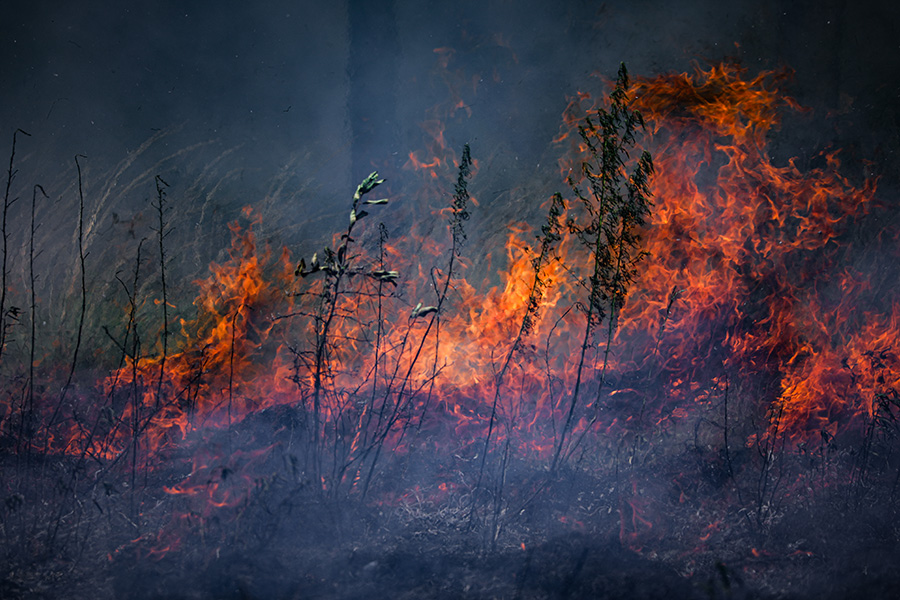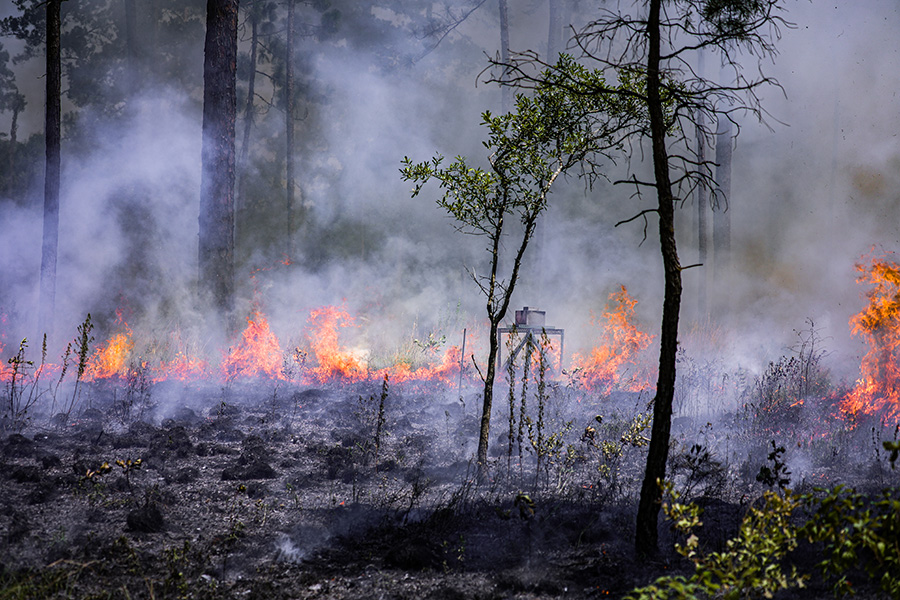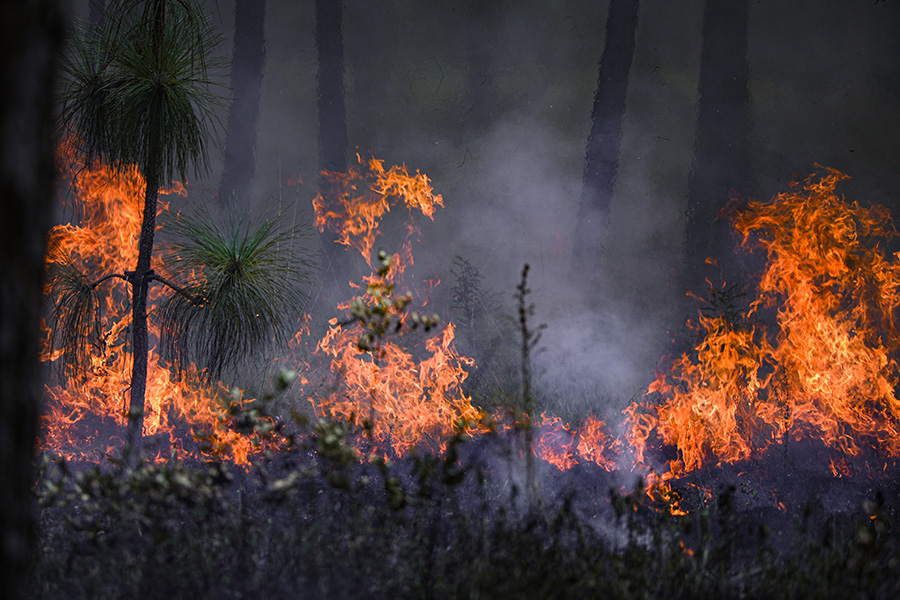Atmospheric Ignition
Scientific computing doctoral student Dorianis Perez uses complex equations to research dynamics that spawn wildfires

As lightning strikes dry brush and fires begin to blaze, miles of forest are suddenly overtaken by a sinister orange glow. Firefighters work to control the blaze on the ground while aerial tankers buzz overhead, dropping thousands of gallons of water from above in an effort to quench the flames.
From the safety of her office at Los Alamos National Laboratory in Los Alamos, New Mexico, Florida State University doctoral student Dorianis Perez is also joining the fight, but she’s using math to fight fires.
By running equations on her computer to model elements on the ground and in the atmosphere that create and sustain fires, Perez can simulate these chaotic events, and the lines of code she generates inform how fire crews can most efficiently battle on the frontlines.

“I work with a certain set of equations that describe fluid flow of fires, or how they move, and I’ll manipulate variables in the equations depending on what I’m trying to physically represent,” Perez explained. “Coding and getting my code to run is like figuring out a puzzle.”
Perez is working as a research assistant at Los Alamos while completing her Ph.D. in computational science with a focus on fire dynamics through the Department of Scientific Computing, in association with FSU’s Geophysical Fluid Dynamics Institute.
It’s Perez’s second stint at Los Alamos, and her current area of study is cloud microphysics, a field examining the physical processes related to atmospheric clouds — what leads to their formation, growth and capacity for precipitation. While clouds may seem disconnected from the fires raging on the ground, other than to produce rain that could hinder a fire’s progress, they actually play a significant role in where a fire starts and how it spreads — or doesn’t.
“I returned to Los Alamos to work on a project simulating pyrocumulonimbus clouds, which form when a fire develops its own thunderstorm that can produce precipitation and lightning, further exacerbating the fire,” Perez said. “I also started a second project to better understand how wind affects wildfire behavior. They may seem like very different projects, but both concern fire dynamics from the atmosphere and the ground.”
It’s imperative to study fire from both dimensions because of the complex variables that drive atmospheric conditions at a moment of ignition — a change in wind direction or a rise in relative humidity can be the difference between an inferno like the 2018 Camp Fire in Paradise, California, and a smaller blaze that can be quickly contained.
Perez did not originally intend to study fire dynamics when she chose to attend Florida State in 2018. At the time, she’d just completed a master’s degree in forensic anthropology at Mercyhurst University in Pennsylvania and had her heart set on studying quantitative forensic anthropology with then-professor of scientific computing Dennis Slice.
Slice was no longer accepting new doctoral students, but Perez received an offer from FSU she couldn’t refuse.
“When I heard about the fire dynamics program in GFDI, I thought it was an important field of study where I could utilize my math skills,” Perez said. “I fell in love with physics-based programming and the objective behind understanding the physical processes in such complex phenomena as fires.”
At the end of her first year at FSU, Perez accepted a summer graduate research assistantship at Los Alamos. Jesse Canfield, her mentor in the Continuum Models and Numerical Methods group, had also earned his doctoral degree at FSU in association with GFDI in 2014, and he immediately recognized the passion and sharp focus Perez brings to the work.
“She thinks deeply about the problems we’re working on. She has an investigative approach to this work that makes her great at what she does,” Canfield said.



While fire dynamics may have been an unexpected path for the New York native and first-generation college graduate, a career including mathematics was always an unwavering constant.
“I was born and raised in Long Island to Dominican immigrant parents, and I loved math throughout school,” Perez said. “When I was a teenager, my family moved back to the Dominican Republic where I went to high school. I returned to Long Island to attend Hofstra University for my dual undergraduate degrees in forensics and math.”
Perez was interning at the New York Police Department’s Crime Lab in the controlled substance analysis section when a desire to pursue field work led her to study forensic anthropology.
She understands that like fire, life’s track is changeable, but there’s no place she would rather be.
“What I especially love about my work is that it draws from so many different disciplines,” Perez said. “When I get a chance to be out in the field and work with different scientists collecting data in the name of trying to understand fire behavior, it’s truly incredible.”
Devin Bittner is a two-time FSU alumna who earned a Master’s in Business Administration in 2022 and a bachelor’s in digital media production in 2019.

